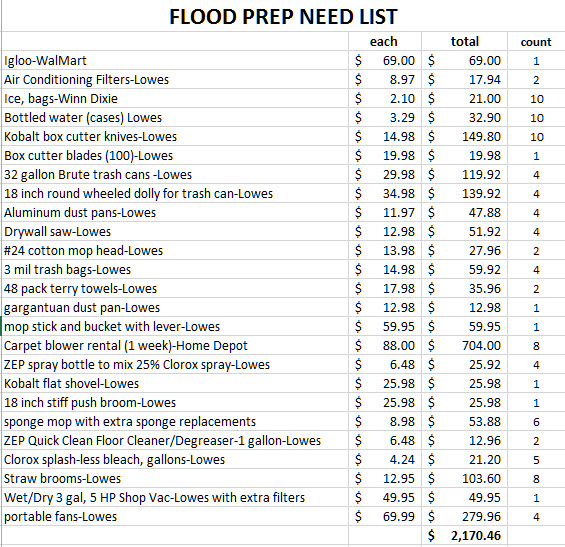FEMA is on the ground now visiting damage by Hurricane Harvey and processing claims with aid per house up to $33,000 but each home FEMA claim can be different. For homeowners, it can feel like a deer caught in headlights, and you just don't know what to do. Mold sets in within 24 hours so you need to take action. This article outlines what victims of flooded property need to do right now, and what it will cost, as told by a Katrina survivor.
 When your home gets flooded, it can be overwhelming. There is so much devastation that you don't know where to begin. The first thing to do is to call all your friends and ask for help, since this is no time go it alone. You will be amazed at how word can get around and friends will come to the rescue. Here is a list of what you need to ask people to bring you:
When your home gets flooded, it can be overwhelming. There is so much devastation that you don't know where to begin. The first thing to do is to call all your friends and ask for help, since this is no time go it alone. You will be amazed at how word can get around and friends will come to the rescue. Here is a list of what you need to ask people to bring you:

 Once you have your supplies, start with the highest priority tasks. Have your insurance adjuster examine your property, take lots of photographs, and file a claim with FEMA as soon as possible. You might have a 4 bedroom home but if only 2 people live there, you will only receive FEMA aid for a 2 person house. Save financial records, photographs, appliances. Everything wet that is salvageable must go outside to dry, all else thrown away.
Once you have your supplies, start with the highest priority tasks. Have your insurance adjuster examine your property, take lots of photographs, and file a claim with FEMA as soon as possible. You might have a 4 bedroom home but if only 2 people live there, you will only receive FEMA aid for a 2 person house. Save financial records, photographs, appliances. Everything wet that is salvageable must go outside to dry, all else thrown away.

FEMA:https://www.fema.gov/apply-assistance
MOLD: https://www.fema.gov/pdf/rebuild/recover/fema_mold_brochure_english.pdf
For more information on flood zone designations, read our recent article: Everything You Need To Know About Reading A Flood Insurance Map